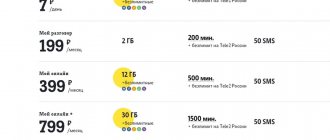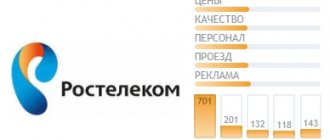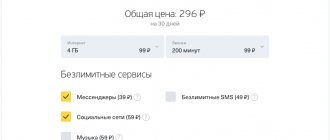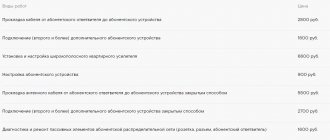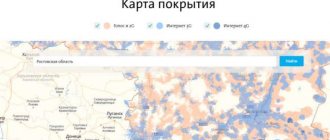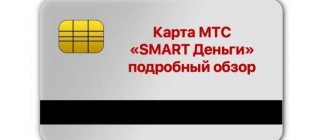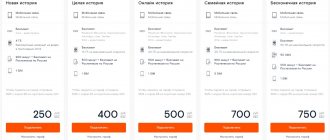The operator Rostelecom and its subsidiaries Tele2 and OnLime provide cellular communication services throughout Russia. In some remote areas this group of companies is almost the only one that can be used. In others, it competes with similar giant operators.
However, it is Rostelecom’s large coverage area that allows you to use their connection where all other providers cannot provide signal stability.
Details about the coverage area and its features
To begin with, we note that the most accurate map of Rostelecom’s coverage area in Russia does not exist. Even the operator himself does not have it. The thing is that when constructing maps, the features of the terrain and the presence of certain buildings in it that absorb or reflect the signal are not taken into account. Also, in the process of creating maps, the nature of the propagation of radio waves is not taken into account.
Creating an accurate map even taking these parameters into account is impossible for two reasons. The first is that the location of objects on the ground may change. Secondly, the propagation of radio signals is influenced by dozens of factors: air humidity and temperature, precipitation, solar activity, the earth’s magnetic field and much more. Therefore, absolutely all coverage maps are indicative only.
Determining on your own what Rostelecom’s coverage area looks like is even more difficult. First, the cell phone does not display the received signal strength data in real time. And secondly, phones differ from each other in sensitivity. One will show the presence of a signal at a given point, the other will declare its absence. A practical experiment will help clarify the adequacy of the reception:
- Buy a Rostelecom SIM card.
- You leave for the place.
- You take your phone out of your pocket.
- Check for the presence of a signal.
But even in this case, you can’t count on a 100% result - due to the peculiarities of radio signal propagation, next time there may not be coverage at a given point.
How to check if there is Rostelecom coverage
The only more or less reliable way to find out whether Rostelecom will “take” it at your chosen point is in practice:
- Buy a Rostelecom SIM card and activate it.
- Get to a place that interests you.
- Check if you can open pages on the Internet or call someone. The tray will also display the current connection type.
Important! Since the signal distribution does not occur linearly or evenly, be prepared that the connection may either be lost or significantly deteriorate in quality if you return to the same place the next day. There are too many factors affecting the signal level.
Rostelecom provides a fairly stable connection in all those areas where its coverage exists (sometimes these are very remote areas), but as is the case with any telecom operator, problems, sagging and lack of network may well occur. This is often not operator error, but rather interference. Some of them are capable of turning an entire section of your road into a “empty zone”, after which the network and communications return.
If you are going to go somewhere outdoors and are not sure that Rostelecom coverage is possible there, call the operator. He will check the presence of nearby towers in his database, and will be able to roughly determine whether there will be a signal or not.
What is indicated on the coverage map of the Rostelecom operator
Considering the coverage of the Rostelecom network on the operator’s website, we can distinguish four main zones:
- Empty areas - there is no subscriber service area; the phone (like any other mobile device) will be silent.
All speeds are variable, all territorial designations are extremely arbitrary. There are a lot of errors, so you shouldn’t count on the accuracy of the maps.
Danycom 2G, 3G and 4G coverage
The Russian mobile operator Danycom has a huge network coverage in Russia.
In 2021, he decided to revolutionize mobile operators and introduced free tariffs. This step has yielded its first “fruits” and most of the dissatisfied subscribers from the Big Three are happy to test promotional tariff plans. Danycom has only one offer: not to pay for communications. This was done against the backdrop of the fact that all providers are increasing payments and forcing their subscribers to look for alternative options. Danycom good coverage and amazing rates>>>
MTS network coverage is updated regularly. Our visitors can see the latest map of this mobile operator. The color scheme is distributed in the following order:
Red LTE, pink 3G, pale pink 2G. When viewing the map, you see a list of available coverage from mobile and Internet operators.
The buttons have a separate selection of 2G, 3G, LTE networks. They have a characteristic sign next to the operator's name. By clicking on the button, a tab with available Internet standards to choose from will open.
The photograph shows all available communication standards. By pressing again, you can cancel the selected network, showing the one you need.
Official card from Rostelecom
As a mobile operator, Rostelecom has posted a detailed cellular network coverage map on its official website. There is a convenient search line here that allows you to clarify the presence of a signal at a specific point. The map shows both filled and empty areas. 2G and 3G networks occupy fairly large areas, while cellular communications in the 4G standard are represented only by small “patch areas”.
The coverage of fourth generation networks from Rostelecom cannot be called continuous, but the number of base stations is growing every year.
The Internet coverage area of Rostelecom is not indicated on the map, because mobile Internet works in networks of all three generations. But you can navigate by the 3G and 4G broadcast marks where high-speed access works. Please note that the data here is updated very rarely - it is quite possible that 4G broadcasting has been going on in your area for several months, and the official coverage maps from Rostelecom say nothing about this.
Broadcast types
Even though Rostelecom covers almost all of Russia, in its coverage area there is also a very arbitrary division into the types of available broadcasting. The speed of your Internet connection and the ability to use mobile communications depend on the type. As a rule, the largest number of Rostelecom stations are located in cities or their environs. A little further, and interference may occur, and the network may not even be detected as 3G.
In addition, there are also empty zones in the coverage area - they can arise both near Rostelecom stations due to the method of their transmission, and in the outback, at the greatest distance, which is logical.
Rostelecom's currently available broadcast types include:
- 4G – high speeds and very little interference. Most cities have 4G coverage - this means that you can safely use not only the Internet, but also regular communications (calls, SMS). Coverage is constantly expanding to cover more and more territory - there is a high demand due to truly fast connection speeds.
- 3G is also a high-speed connection. More widespread than 4G. The coverage area can even include small settlements.
- 2G – normal connection, slow connection. The most basic type for many operators. The Internet coverage area is small, but mobile communications in this range work everywhere.
You can find the broadcast type designation on your smartphone, even just by walking around the city. Some areas will have 4G coverage, while others will barely support 2G. This depends on the location of Rostelecom equipment and towers, but the chance of constant use of high-speed network access in cities is much greater than in remote areas of the country.
Unofficial map
We present to your attention one interesting mapping service, information for which is sent by real subscribers. They evaluate the presence of a signal from a particular operator at arbitrary points, on the basis of which a map is formed. As an example, check out Rostelecom's coverage in Moscow. 3G coverage is marked in green, 4G coverage in blue. 2G networks in Moscow do not work.
When studying the map, choose the Tele2 operator - it is its resources that Rostelecom uses to build its own cellular network. The operator has very few towers of its own. The information in this service is updated in real time and is accurate.
2.5 / 5 ( 6 votes)
0
How to determine the location of towers
If you definitely want to see Megafon cell towers on the map, you can download special software - there are several proven high-quality applications on the network. Why are they even needed? Users download them for different purposes:
- Users can evaluate the actual coverage area of the operator;
- You can easily find free wireless network sources;
- To find out whether your operator will work in a certain location;
- In order to understand how stable the tower signal is - are there any failures or irregularities in operation;
- When purchasing wireless routers, you need to know which way to point the antennas to catch the signal;
- Radio amateurs will be able to determine how much interference there is - and whether there is any at all;
- Often, data is used when choosing housing - after all, everyone needs high-speed and constant access to the network, as well as a stable signal for communication;
- The information is also used during rescue operations - in some corners there are no towers, it is necessary to install special equipment to catch the signal.
- OpenSignal;
- Cellulailer;
- Cellumap;
- Network Signal Info;
- Connection quality;
- Cell Coverage Map;
- netmonitor;
- Network Cell Info.
Let's try to search for the nearest Megafon tower in the OpenSignal application:
- Download the program and open it, make sure you are connected to the Internet;
- The interactive coverage will load automatically;
- You will see markings by zones - the colors correspond to the quality level;
- Click on the nearest tower of any operator, marked with a special icon;
- Detailed speed and quality data will open.
Together we looked for Megafon base stations on the map, figured out equipment identification and learned to find signal sources through a mobile application. Agree, it’s interesting to know how our gadgets work, where does the connection come from?
M
This is a more balanced plan. Who was it designed for:
- People who call more often also call to other operators.
- Subscribers who rarely use mobile Internet.
- Clients who want to optimize costs.
What are the conditions for Rostelecom's cellular tariff plan?
- Every month 270 rubles are debited from the account in the form of a subscription fee.
- You can call Rostelecom numbers for free.
- 350 minutes are provided for other operators.
- After they are exhausted, you will need to pay 1.5 rubles per minute.
- The subscriber receives 50 messages.
- The amount of traffic is 1 GB.
The program was created for clients who make more calls and rarely use the Internet. If you need more traffic, then it is better to choose another option. At the end of the main Internet package, an additional 500 MB are subsequently connected for 50 rubles.
How does the universal service mechanism work?
The mechanism of universal communication services began operating in Russia in 2005. Initially, universal services meant payphones and public Internet access points (PCA). The loss from the provision of relevant services to universal service operators is compensated from the Universal Service Reserve, to which all telecom operators transfer 1.2% of their revenue.
In 2014, Rostelecom became a single universal service operator. At the same time, the so-called “elimination of the digital divide” was added to the list of universal services: in every locality with a population of 250 to 500 people it was necessary to lay a backbone fiber-optic cable (FOCL) with a speed of at least 10 Mbit/s. Access points using Wi-Fi technology should be installed in these same settlements.
SCRF will allow Rostelecom to use frequencies of 2.3-2.4 GHz to provide cellular services in settlements with a population of 100 to 500 people
Since 2021, the operation of most PKDs has been suspended. In 2021, amendments were made to the Law “On Communications”, according to which PKDs were excluded from the list of universal communication services.
At the same time, the category of settlements falling under the program to “eliminate the digital divide” was expanded to include settlements with a population of 100 to 500 people. In addition, if such communities do not have cellular coverage, the universal service provider must fill the gap.
Also, the universal service mechanism was expanded to new federal subjects - the Republic of Crimea and the federal city of Sevastopol. Here, the universal service operator was created by Rostelecom to operate on the territory of the Crimean peninsula. Now Rostelecom's share in Miranda-Media has dropped to less than 20%.


